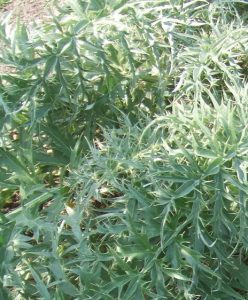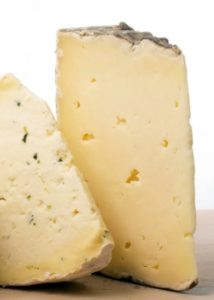 O4-It is well known that various plant organs (leaves, seeds and flowers) of C. cardunculus shows different levels of total polyphenol, total flavonoid and condensed tannin contents with anti-oxidant and anti-microbial properties [3; 51]. Therefore, both lipophilic and phenolic fractions from cardoon leaves showing biological activity will be extracted, isolated and tested to add them to the packaging and coating films made of cardoon flour proteins.
O4-It is well known that various plant organs (leaves, seeds and flowers) of C. cardunculus shows different levels of total polyphenol, total flavonoid and condensed tannin contents with anti-oxidant and anti-microbial properties [3; 51]. Therefore, both lipophilic and phenolic fractions from cardoon leaves showing biological activity will be extracted, isolated and tested to add them to the packaging and coating films made of cardoon flour proteins.
 In addition, the aqueous extracts of flowers of C. cardunculus contain aspartic proteases, that have been extensively investigated as potential coagulants in cheese making. These enzymes belong to the A1 aspartic protease family, are active at acidic pH, inhibited by pepstatin A and possess two aspartic acid residues responsible for their catalytic activity [52]. Plant sources for enzyme clotting activity have been already identified in Ficus carica, Calm viscera, Carica papaya, Ananas comosus [53]. Unfortunately, all these enzymes were found unsuitable since they produce extremely bitter cheese because of their strong proteolytic activity [54; 55]. An exception is represented just by flower extracts of Cynara genus and, in particular, of C. scolimus and C. cardunculus containing a multiplicity of aspartic protease molecular forms [56; 57]. This aspect is very important, since, nowadays, the search for new potential coagulating enzymes from plants is in continuous progress to make them industrially useful following the increasing global demand for diversified and high-quality cheese production [58]. In this project we aim to isolate aspartic proteases with milk clotting properties in C. cardunculus with the aim to proceed (i) to the immobilization of a ‘‘plant rennet” extracted from a low cost renewable source, and (ii) to obtain new dairy products.
In addition, the aqueous extracts of flowers of C. cardunculus contain aspartic proteases, that have been extensively investigated as potential coagulants in cheese making. These enzymes belong to the A1 aspartic protease family, are active at acidic pH, inhibited by pepstatin A and possess two aspartic acid residues responsible for their catalytic activity [52]. Plant sources for enzyme clotting activity have been already identified in Ficus carica, Calm viscera, Carica papaya, Ananas comosus [53]. Unfortunately, all these enzymes were found unsuitable since they produce extremely bitter cheese because of their strong proteolytic activity [54; 55]. An exception is represented just by flower extracts of Cynara genus and, in particular, of C. scolimus and C. cardunculus containing a multiplicity of aspartic protease molecular forms [56; 57]. This aspect is very important, since, nowadays, the search for new potential coagulating enzymes from plants is in continuous progress to make them industrially useful following the increasing global demand for diversified and high-quality cheese production [58]. In this project we aim to isolate aspartic proteases with milk clotting properties in C. cardunculus with the aim to proceed (i) to the immobilization of a ‘‘plant rennet” extracted from a low cost renewable source, and (ii) to obtain new dairy products.
Project Results